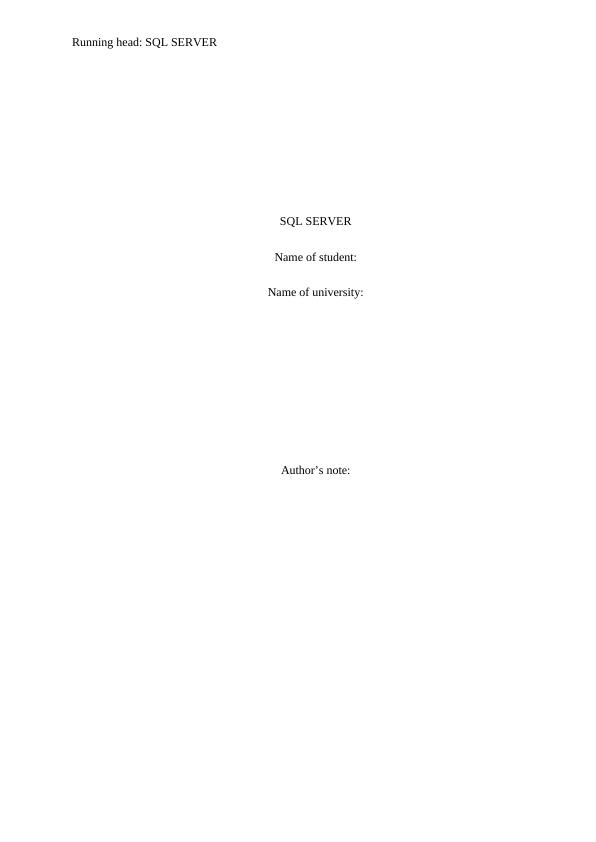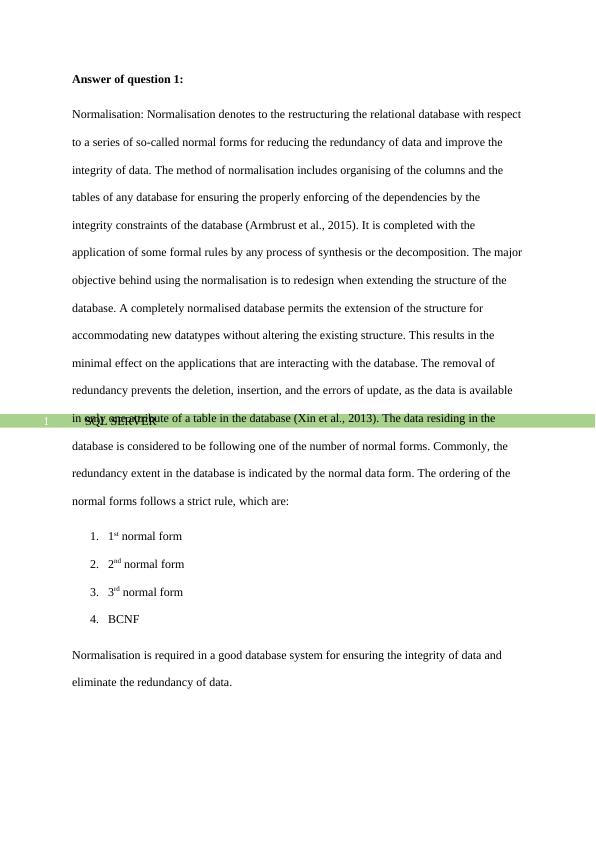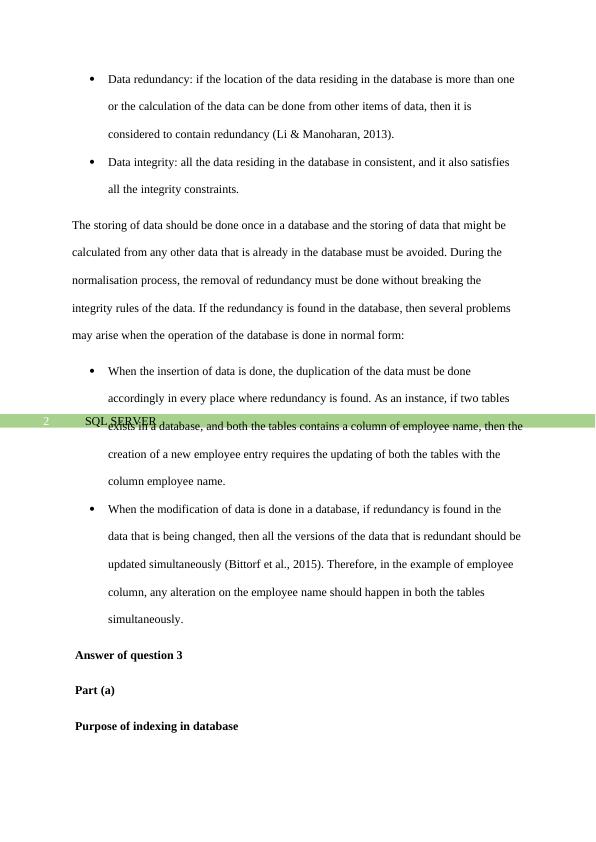SQL Server - Assignment PDF
8 Pages2026 Words28 Views
Added on 2022-01-03
SQL Server - Assignment PDF
Added on 2022-01-03
ShareRelated Documents
End of preview
Want to access all the pages? Upload your documents or become a member.
Collection of Logically Related Data - Desklib
|6
|563
|99
Data Model, Normalisation, DDL and DML for Spock Bank Database
|14
|1412
|148
Structured Query Language and Server Services PDF
|13
|1744
|22
Database Design for ABC Company
|22
|1388
|435
Assignment on Database Fundamentals
|4
|666
|51
Study on Enterprise Architecture Integration
|5
|815
|257



